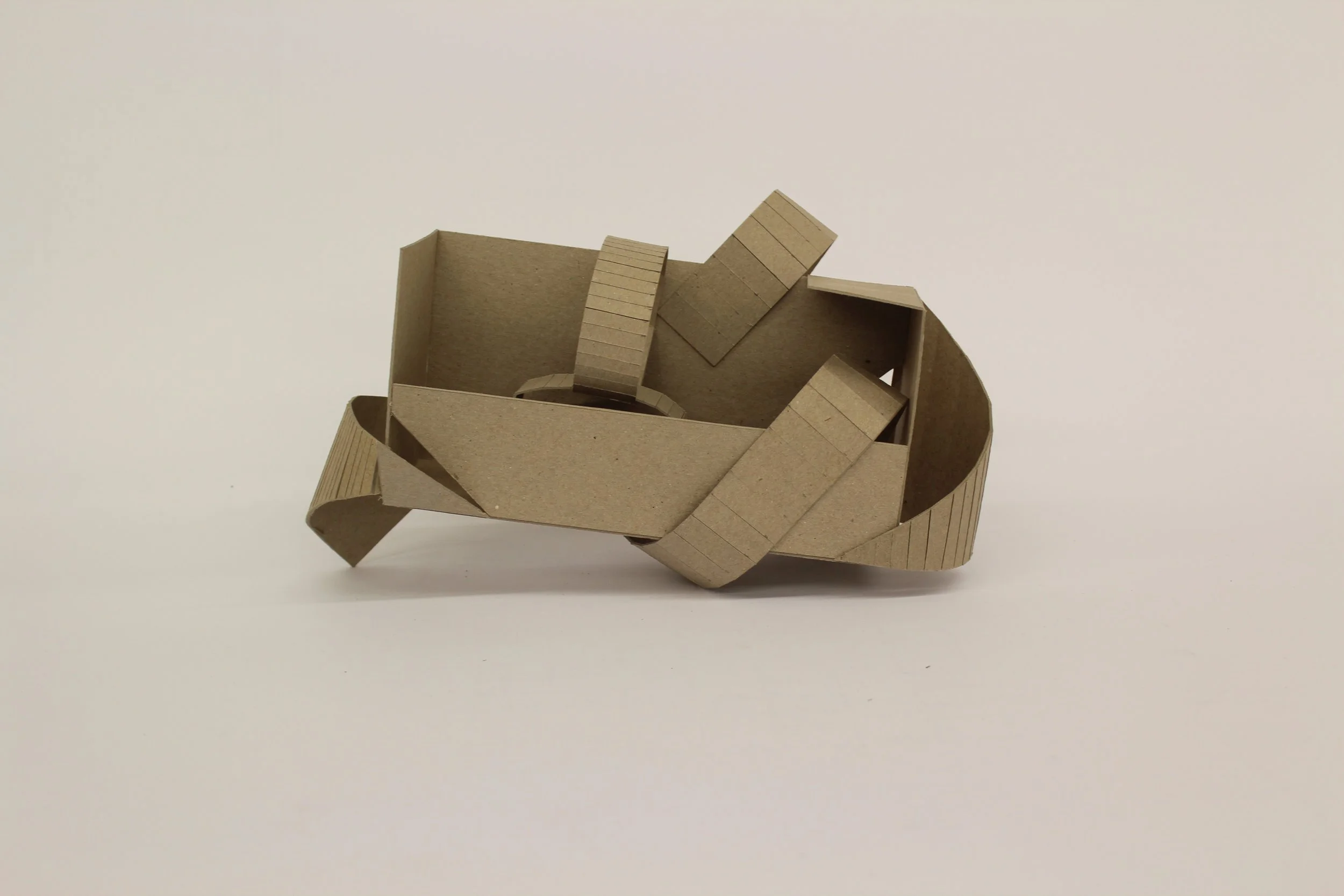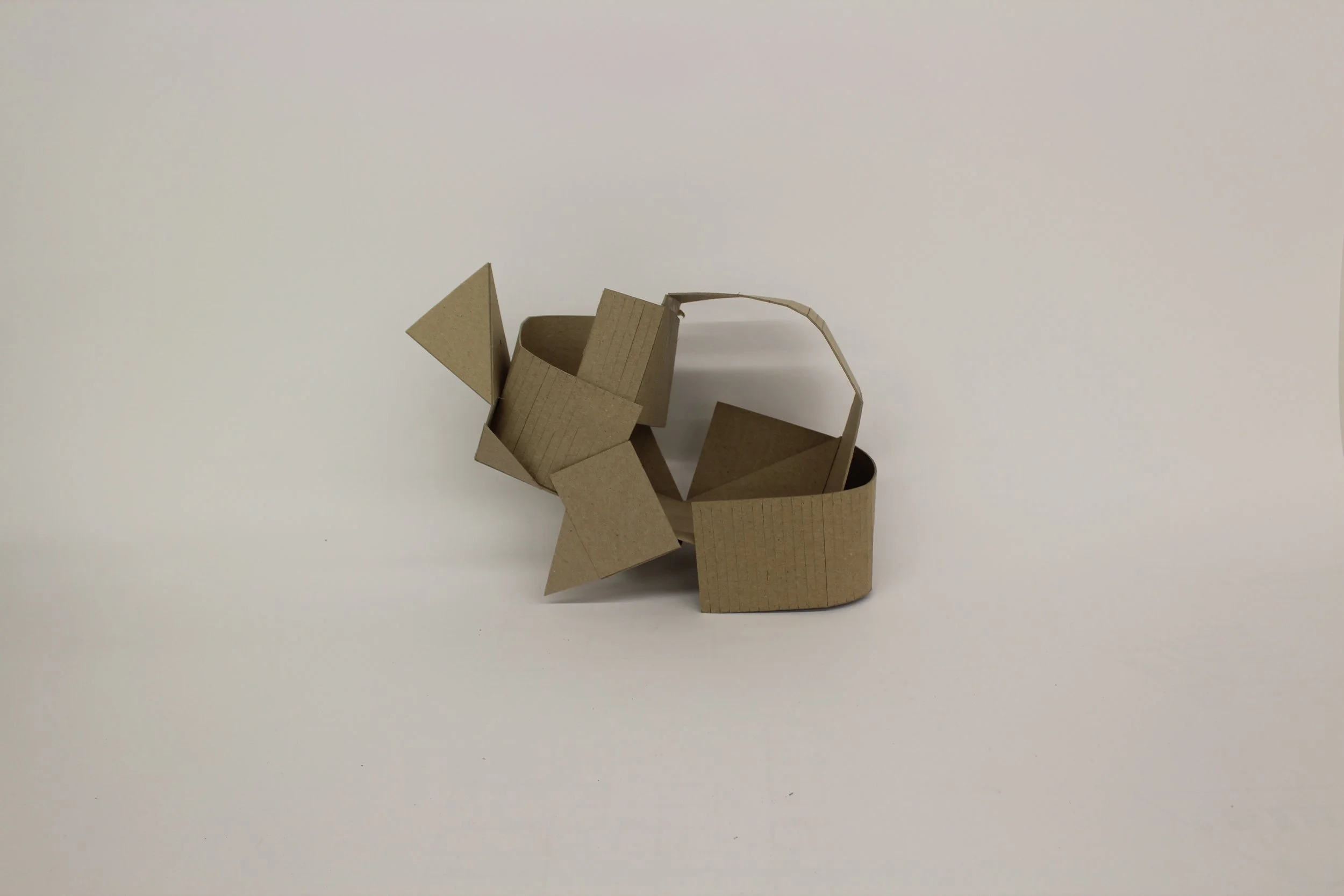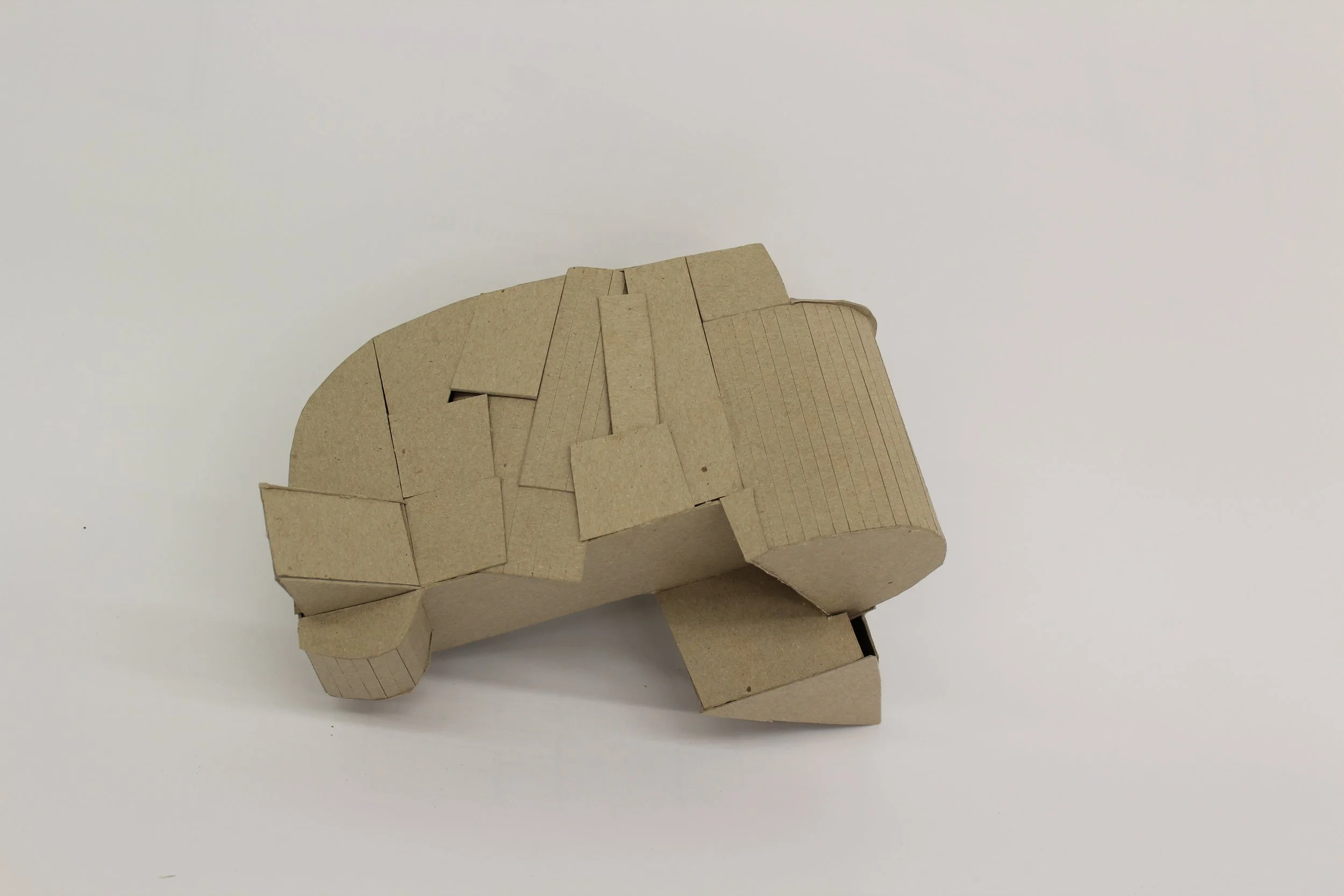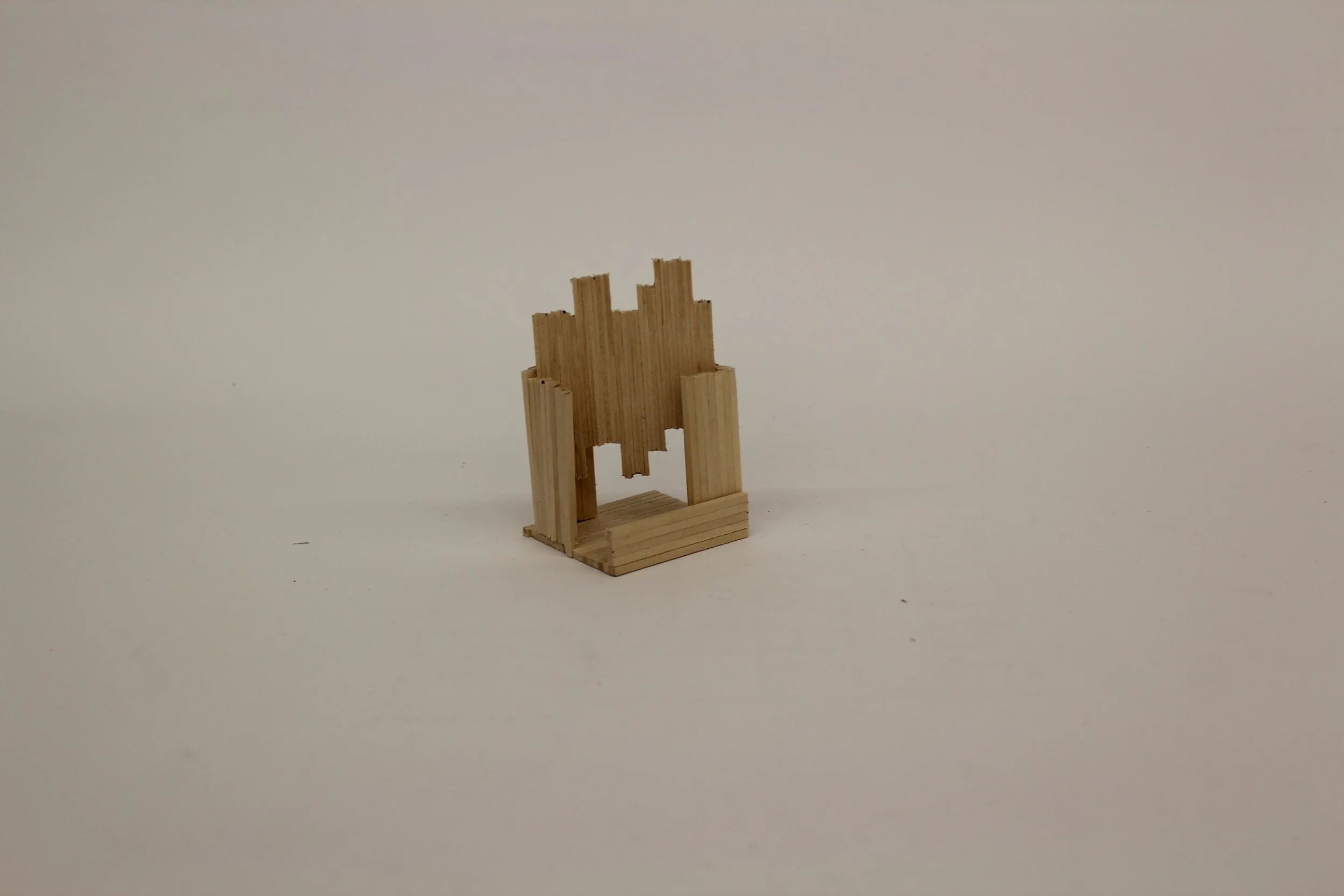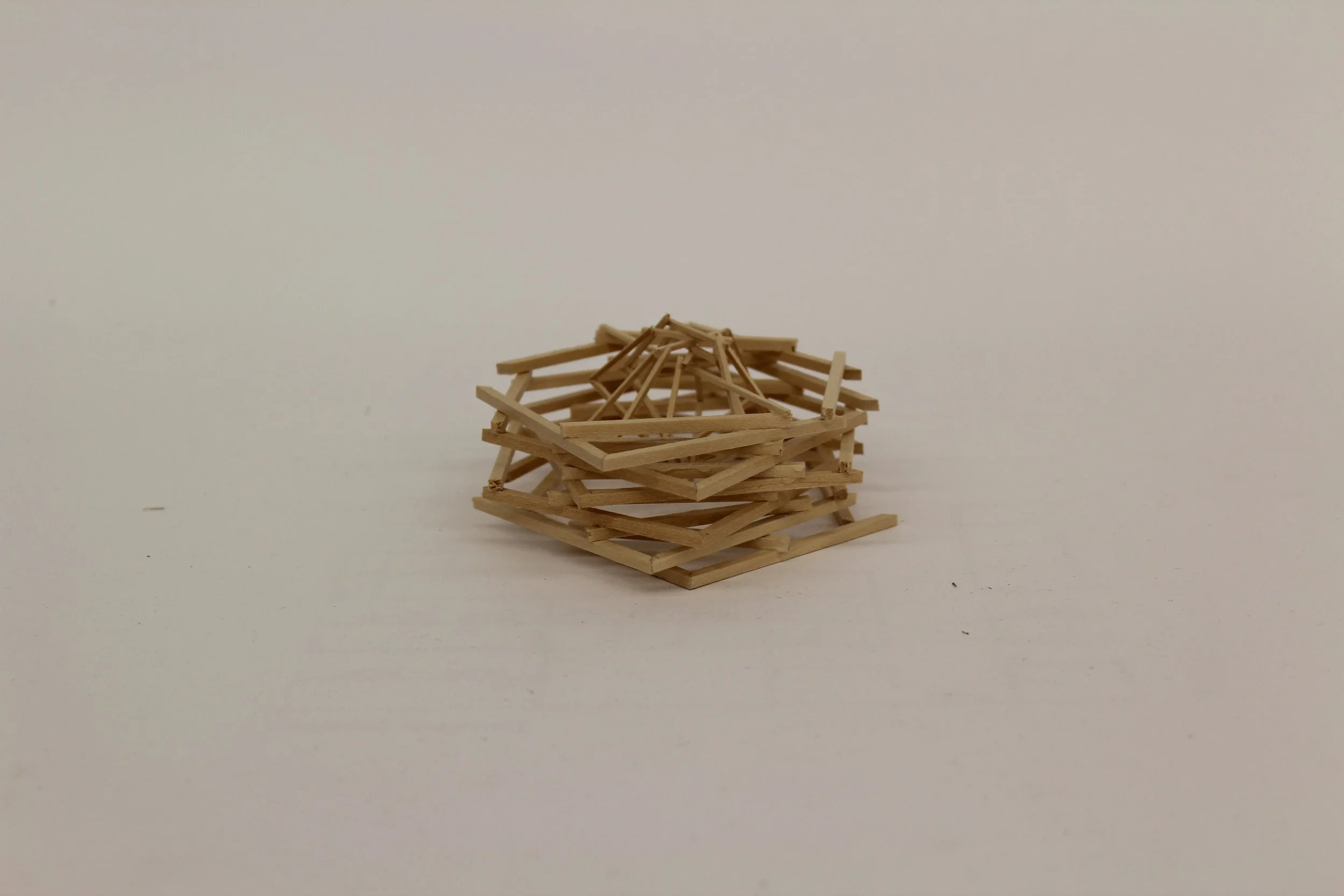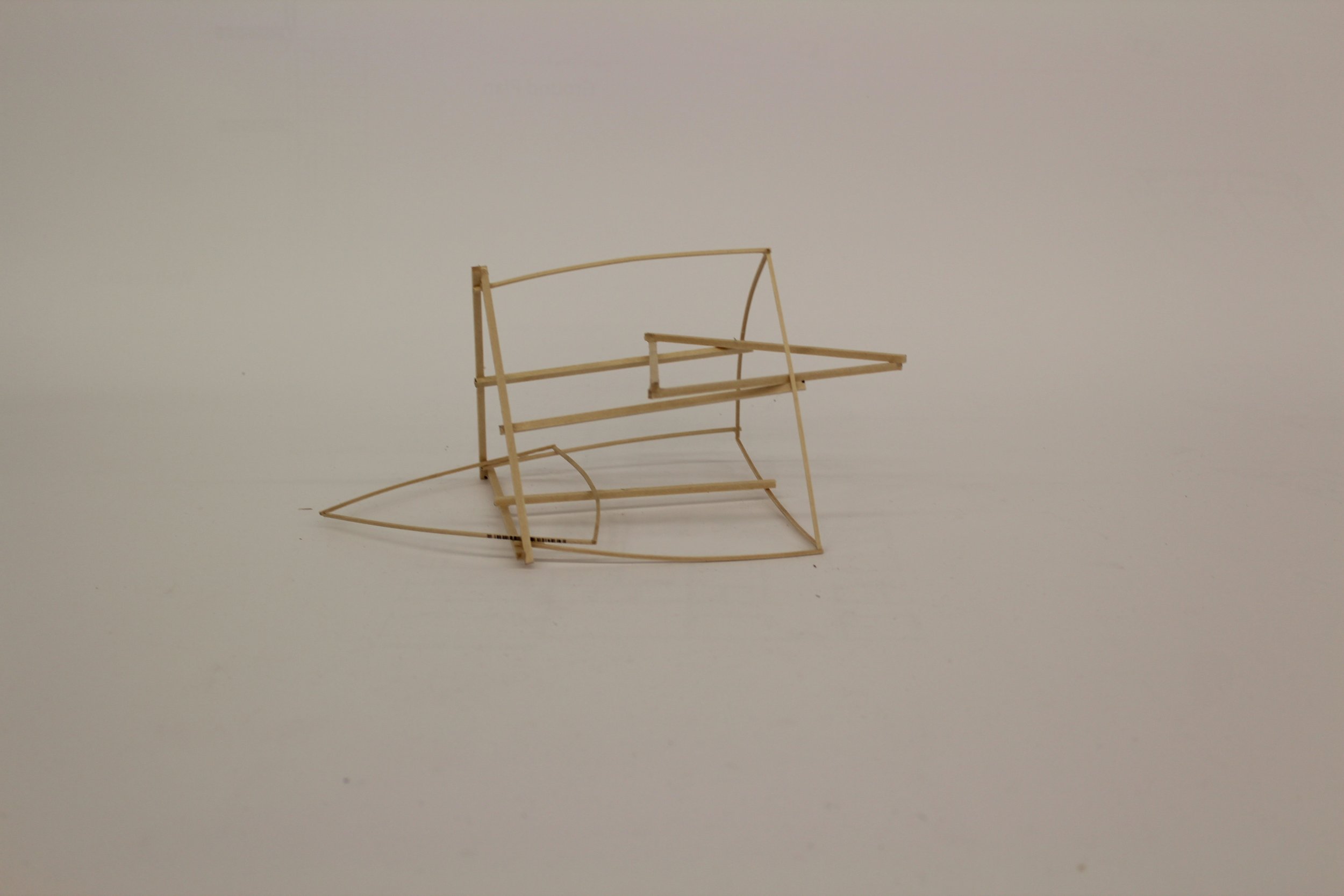1st Years Work
SETTING THE TABLE
Title - Blend
Instructor - Micah Rutenberg
Year - 2014
Studio - 1A
Transforming objects into a space, with pieces of material that would enclose the human body. Using various techniques to produce a scaled model. By cutting, scoring and folding in order to create a mass in space.
1
2
3
These three models, in correlation with using certain techniques and a combination of others to produce a form. By leaving certain areas open, it creates a sense of freedom (1 and 2). The way space localizes to actual points within the mass. Unlike the other the last one encloses itself, intentionally leaving out any opening to freely come and go.
1
2
3
The reasoning in some aspects, of how spaces relates to the human body and how it would inhabit it. The intent of having open spaces, was to allow the human body to move around without any interference’s. The first one, is the attempt of allowing the body to have its own space. With an open area cut in half allowing two bodies to inhabit, without having to directly interact with one another. The second one, layers to encapsulate the human body in a nucleus. Thus exploring two types of methods that would create a space unique to an activity, the third becomes something different. The third model allows less restriction on the body, and lets the space be perceived as larger. Not having the solid mass that would separate the space, from the open area to a closed one.
SIDE ELEVATION
FRONT ELEVATION
SIDE ELEVATION
The whole premise of having a space and allowing you to blend the surroundings, was in reference to the movie “The Cook, The Thief, His wife, and Her Lover” by Peter Greenaway. An interaction that occurred with the characters within the same space.
EMOTIONS
The transition of how a person would travel from one space to another was one aspect retained from the movie. The emotion it can create towards other individuals, and how the space itself became part of the situation. The characters, Albert Spica (Thief), and Georgina Spica (Wife), display different emotions that escalate towards the wife. The icon with the sharp points, is depicted as the Thief and the fragmented icon was depicted as the wife.
LIVING MACHINES
Title - Fragment
Instructor - Thomas Stanley
Year - 2014
The fragmentation of the lighter, and how it was composed was a great way to explore the composition. As it was taken apart, it revealed that it was composed of more than just larger pieces.
EXPLODED AXONOMETRIC
This exploded axonometric shows, all the individual parts the lighter needs in order to function. Also showing the projection of the mechanical objects spreading through space. Using both vertical and horizontal projections, it allowed to have a centralize point of all the parts form the originated from.
PROJECTION LINES
LIGHTER
Using projection lines on the left image, exploring the movement of the object in space. The image to the right, highlights the part that would move when used, as well as the parts that would change position.
PLAN AND SECTION
AXONOMETRIC
Continuing with the topic of how objects work in space. We were presented with 10 precedents and 4 articles. The precedent used in this phase was of Maison de Verre, and the article of Julian Assange. The objective was to model the precedent and combine the article to that building. Julian Assange's story of how he was isolated in the Ecuadorian Embassy. Having the information of the article, researching Masion de Verre then interlacing them both into a narrative. Viewing the plans of Maison de Verre and recreating it in Rhinoceros. Once recreated, distortions were applied to Maison de Verre, to create a different aspect of the building. The original plans where overlaid onto the distorted ones. Mapping the areas where Julian Assange would feel at ease. The red are part of the space he felt uncomfortable. The yellow being the path he would interact with. The green area was where he felt at ease.
PERPECTIVE
The perspective view represents Julian Assange in his comfortable space. Away from all the noise that followed him in the embassy. Showing the lower level, where others would come in close contact with the building and having only one path to come in from.
SHIFTING MEAL
OVERLAY
The representation of inanimate objects, moving through a meal between two individuals. In a cycle, every 3 minutes a photograph was taken to record the movement. Through the period of the meal a series of images where gathered. Then they were overlaid on top of one another. The collage was created, and the shift of the objects became visible. By recreating the images in Rhinoceros the shift in the objects becomes more noticeable.
SITE CONTENT
In a group project, the task that was given was to recreate a Mc Donald's. A model was created in parts, and brought together to create the restaurant. The representation of the restaurant, within its context and how it made its presence. Even though it wasn't in the view of the main street. Using simple logos such as lights to attract customers.
RESTAURANT (MCDONALDS) INTERIRO
Human Tendencies
Title - Compression
Instructor - Louis Molina
Location - L.A. River
Year - 2015
Studio - 1B
The project asked for a space in relation to a human tendency. The human tendency that generated all of the following forms was compression. The project would be situated around the L.A. River near Egret Park.
TOP VIEW
FRONT VIEW
SIDE VIEW
By analyzing the human tendency of compression, where the human body folds into itself to reach the lowest point on feet. The images above depict the activity from different angels. Showing how they can produce geometric shapes in space.
Analyzing compression in regards to the human body, the creation of a space that would act the same conditionally in a spatial form. Allowing some of the geometric shapes that appear in the images, to create a space of compression for the human body.
As the transition between models continues, a linear extension from the mass becomes an inviting point for visitors to enter the space. As the space begins to open up, it further invites people to occupy it.
Building on the previous iterations, the project evolves to produce compression in the horizontal. The space becomes compressed in the linear extension of the mass and creates exit at the opposite end. The compression releases you into a larger space, to allow for an activity to be performed. In this case praying, the activity further defines the project by referencing the action of holding hands together while praying. The open space in the middle provides a moment of clarity, that becomes peaceful due to the sound being blocked off by the higher walls.
The way the human body moves through space, is something one hardly takes notice of. The space compresses the human body horizontally, which releases into a larger space. At the entrance it would gradually increase. The height of walls envelop the body and separate them from the outside world. The structure is meant to be located at the bottom of the river. When the water would be low, but would be hidden when the water level would rise.
The structure is at the lowest point in the river, allowing the person to have a disconnect from the environmental surroundings.
SECTION OF THE L.A. RIVER
SECTION OF THE L.A. RIVER
SECTION
SECTION AND TOP VIEW OF MODEL
SECTIONS WITH FRONT ELEVATION
